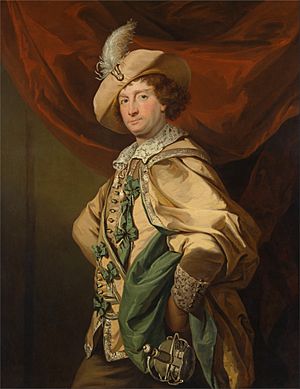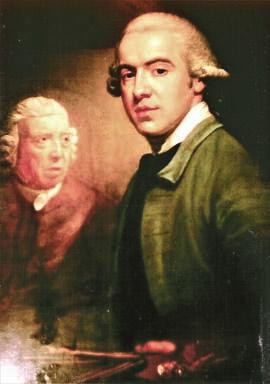Benjamin Vandergucht facts for kids
Benjamin Vandergucht (born in 1753, died in 1794) was a talented artist from England. He was known for dealing in pictures, fixing old paintings, and also for being a painter himself. He was also called Van der Gucht.
Contents
Benjamin Vandergucht's Early Life and Training
Benjamin Vandergucht was one of 32 children! His father, Gerard Vandergucht, was an engraver, which means he made pictures by carving designs into metal plates. Benjamin was also one of a pair of twins.
He started learning how to draw at the St Martin's Lane Academy. When the Royal Academy was created, he was one of the very first students to join its art schools.
Becoming a Picture Dealer and Restorer
Benjamin Vandergucht became more famous for buying and selling paintings, and for fixing them, than for his own artwork. He had many important people as customers, including those in high society. This means he worked for wealthy and influential individuals.
For some time, he lived in Pall Mall, London, a famous street in London. Later, he inherited his father's house in Upper Brook Street. He then built a special art gallery onto his house. This gallery was where he kept the valuable paintings he bought and sold. People could pay one shilling (an old type of British money) to come and see his impressive collection.
Benjamin Vandergucht's Final Years
On September 21, 1794, Benjamin Vandergucht was returning from a business visit. He had been to see Lord George Cavendish at Chiswick House. The boat he was traveling in was hit by another boat near Barnes Terrace. Even though Benjamin was a good swimmer, he sadly drowned. After his death, his large collection of paintings was sold at an auction. This sale happened at Christie's in March 1796.
Benjamin Vandergucht's Artworks

Benjamin Vandergucht painted many portraits, which are pictures of people. Most of his paintings were of famous actors of his time. Some of these actors included David Garrick, John Henry Johnstone, John Moody, and Henry Woodward. Some of his portraits were even made into engravings, so more people could see them.


